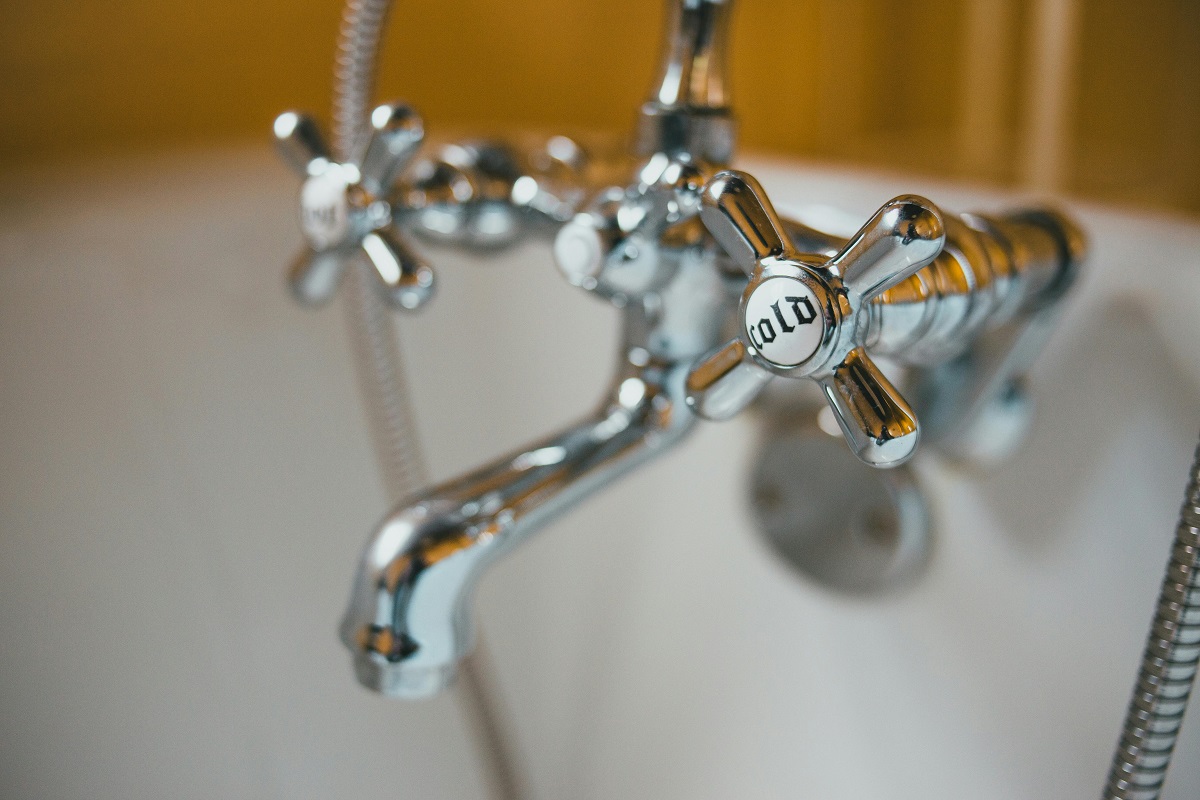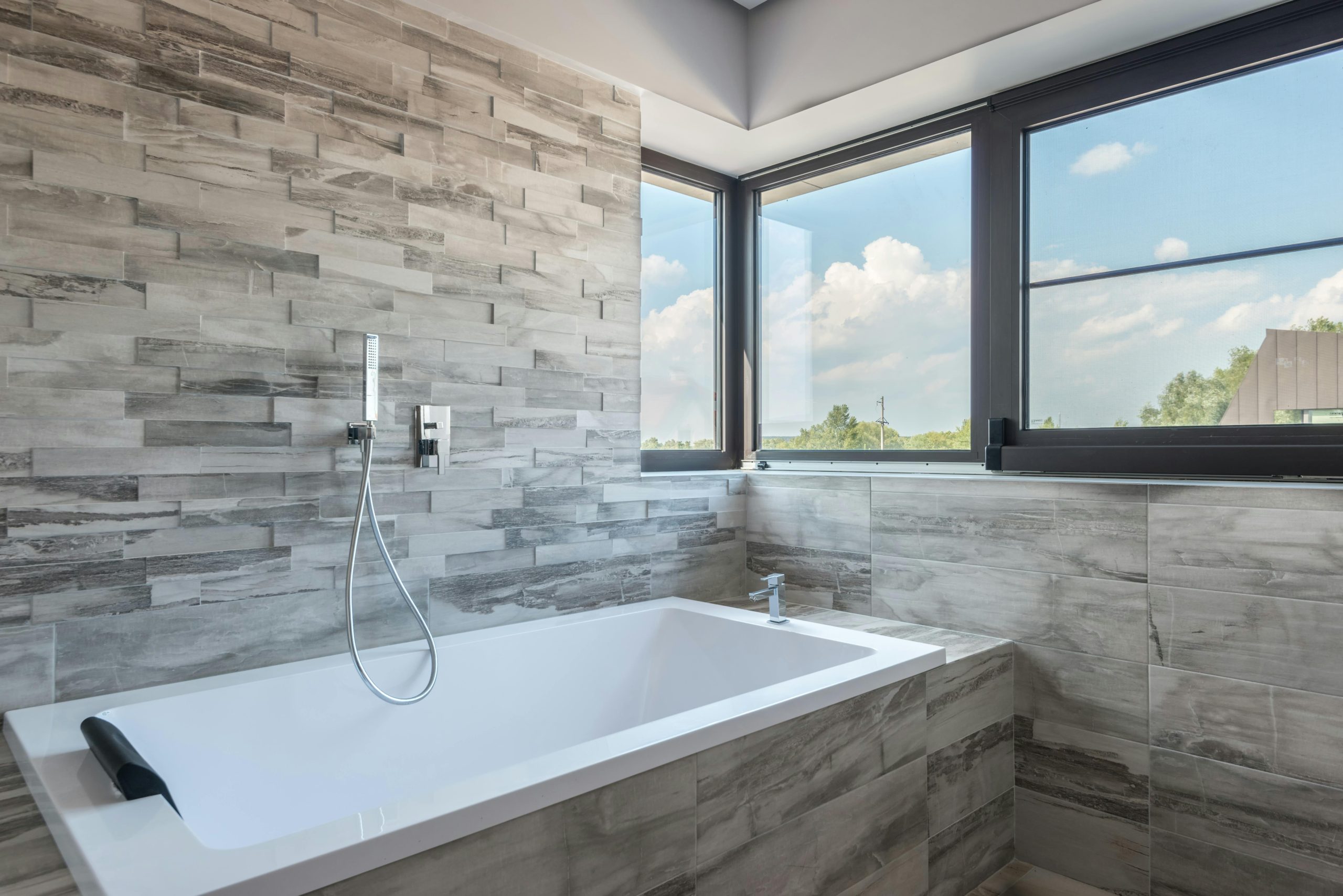- Proper preparation is essential: Turn off the water supply, drain pipes, remove fixtures, and protect floors and walls to prevent damage and make removal safer.
- Use the right tools: Safety gear, wrenches, pry bars, saws, and sealants help make the removal process more efficient and reduce the risk of injury.
- Step-by-step removal matters: Disconnect plumbing, remove panels or tiles, loosen the bathtub, lift it carefully, and clean the area thoroughly before installing a shower.
- Anticipate challenges: Heavy tubs, stubborn plumbing, tight spaces, and potential wall or floor damage are common, so plan accordingly.
- Plan for disposal: Recycling, bulk pickup, donation, or professional removal ensures safety and environmental responsibility.
- Prep for the new shower: Check plumbing, floor slope, wall framing, and accessibility features to ensure a smooth bathtub-to-shower conversion.
A bathtub-to-shower conversion is a smart way to maximize space, improve accessibility, and give your bathroom a modern update. But before you can enjoy your new walk-in shower, you need to remove the old bathtub—a task that might seem intimidating but is entirely manageable with the right approach. In this guide, we’ll walk you through how to remove a bathtub step by step, answer common questions, and give tips for a smooth transition to your new shower.
Why Consider a Bathtub-to-Shower Conversion?
Bathtubs aren’t always practical. Many homeowners realize that showers take up less space, are easier to clean, and are safer for kids, seniors, or anyone with mobility challenges. Some reasons to convert include:
- Space optimization: Removing a bulky tub opens up floor space and allows for larger shower stalls or storage solutions.
- Accessibility: Walk-in showers reduce tripping hazards and can be fitted with grab bars or benches.
- Modern aesthetics: A sleek shower can give your bathroom a contemporary feel.
- Maintenance: Showers generally require less cleaning and upkeep than a bathtub.
Once you’ve decided to proceed with a bathtub to shower conversion, the first step is removing your existing bathtub carefully and efficiently.
What Tools and Materials Will You Need?
Before you start removing the bathtub, having the right tools on hand makes the process much easier and safer. Here’s a comprehensive checklist for the job:
- Safety gear: gloves, goggles, and a dust mask to protect from debris and dust.
- Wrenches: adjustable or pipe wrenches for disconnecting supply lines.
- Screwdrivers: Phillips and flathead to remove fixtures and fasteners.
- Utility knife: for cutting caulk, sealant, or minor adhesives around the tub.
- Pry bar or crowbar: to loosen the tub from wall studs and flanges.
- Reciprocating saw or hacksaw: useful for cutting through old pipes, nails, or even a stubborn tub if needed.
- Hammer: for tapping loose nails or minor demolition.
- Buckets and towels: to catch residual water when disconnecting pipes.
- Plastic sheeting or drop cloths: to protect floors from dust, debris, and sealant.
- Tape: handy for temporarily securing loose pipes or small fixtures.
- Level and packers: for checking alignment if you’re planning the new shower tray immediately after removal.
- Sealant/adhesive: products like multi-purpose sealant may be needed if you’re preparing for a shower installation.
Having these items ready ensures you can move efficiently through each phase, from removing the old bath to prepping the space for the new shower.
How to Prepare Your Bathroom for Bathtub Removal
Proper preparation is essential to avoid damage and make the removal process smoother. Here’s a step-by-step approach:
- Turn off the water supply: Shut off the main water valve for the house to prevent leaks or accidental flooding.
- Drain the pipes: Open taps to relieve pressure and drain any remaining water. Small amounts of water may still leak when pipes are disconnected, so have a bucket ready.
- Disconnect fixtures: Remove taps, showerheads, handles, and the overflow plate from the bath. This makes it easier to remove the tub without damaging plumbing or fixtures.
- Protect your space: Lay down plastic sheeting or drop cloths to catch debris, water, and dust.
- Clear the area: Remove toiletries, rugs, and any furniture nearby. This provides space to maneuver the tub and keeps other items safe.
Proper prep ensures the work is safer and reduces the risk of damaging walls, floors, or remaining fixtures.
Step-by-Step Guide: How to Remove a Bathtub
With the tools ready and the bathroom prepped, you can move on to removing the bathtub itself. Here’s a detailed step-by-step guide:
Step 1: Disconnect the Plumbing
The first step is to safely detach all plumbing connections:
- Shut off the hot and cold water supply at the main valves.
- Disconnect supply lines to the taps, using a wrench if needed.
- Remove the overflow and drain fittings from the bathtub.
- Loosen the waste pipe and disconnect it from the main soil pipe. Expect a small amount of water to escape during this step.
Ensuring the plumbing is fully disconnected prevents leaks and allows the tub to be removed cleanly.
Step 2: Remove Surrounding Panels or Tiles
If the tub has wall panels or a tiled surround, these need to be removed first:
- Score the caulk around edges with a utility knife to break the seal.
- Carefully pry panels or tiles starting from a corner, using a flathead screwdriver or putty knife for stubborn sections.
- Remove any screws or clips holding panels in place.
Taking off panels first minimizes damage and makes loosening the bathtub itself easier.
Step 3: Loosen the Bathtub
Most bathtubs are secured to wall studs with nails, screws, or clips:
- Locate fasteners along the tub flange and remove them.
- Gently pry the tub away from the wall using a pry bar, loosening any adhesive or caulk along the edges.
- Cut through any remaining sealant with a utility knife.
Go slowly—rushing this step increases the risk of cracking walls or damaging floors.
Step 4: Remove the Bathtub
Once fully loosened, it’s time to take the tub out of the space:
- Carefully lift the bathtub. For heavier models, especially cast iron, enlist a helper.
- If the tub is too large to exit as a whole, cut it into sections using a reciprocating saw.
- Move the tub to a safe area for disposal, recycling, or repurposing.
Taking proper precautions ensures a smooth removal without injury or damage.
Step 5: Clean and Inspect the Area
After the bathtub is out, prepare the space for the new shower installation:
- Sweep the floor and remove any debris, leftover caulk, or adhesive.
- Inspect plumbing for leaks, corrosion, or misalignment, making any necessary adjustments.
- Check walls and floor for water damage, mold, or structural issues. Addressing these now prevents problems during shower installation.
- Level the floor if needed, using packers or shims, especially if a new shower tray will be installed.
A clean, prepped area is critical for a successful and long-lasting shower conversion.
What Are Common Challenges When Removing a Bathtub?
Even with careful planning, bathtub removal comes with challenges. Knowing what to expect helps you avoid surprises:
- Heavy tubs: Cast iron tubs can weigh several hundred pounds. Always use proper lifting techniques and enlist help.
- Stubborn plumbing: Old pipes may be corroded or difficult to disconnect. Penetrating oil or a pipe cutter can help.
- Tight spaces: Small bathrooms make maneuvering the tub tricky. Removing doors or trim can give you extra room.
- Wall damage: Tiles or drywall can crack during removal. Expect minor repairs, especially around edges.
Being aware of these challenges prepares you for a smoother removal process.
How to Dispose of an Old Bathtub

Once your tub is out, you’ll need a plan for disposal:
- Recycling: Cast iron and steel tubs can often be recycled at scrap yards.
- Bulk waste pickup: Many municipalities offer large-item trash pickup.
- Donation: If the tub is in good condition, consider donating it to a nonprofit or salvage store.
- Professional removal: Some contractors will remove and haul away old tubs for a fee.
Proper disposal ensures safety and environmental responsibility.
How Long Does It Take to Remove a Bathtub?
The timeline depends on several factors:
- Tub type: Acrylic or fiberglass tubs are lighter and easier to remove than cast iron.
- Bathroom layout: Tight or complex spaces require more maneuvering.
- Experience level: DIYers may take longer than professionals.
On average, expect 2–4 hours for a standard bathtub removal if you’re prepared and have help.
What Should You Check Before Installing a New Shower?
After the bathtub is gone, you have a clean slate for your new shower. Before installation, check the following:
- Plumbing: Ensure pipes are properly aligned and leak-free.
- Walls and floors: Repair any water damage or mold.
- Drain slope: The shower floor should slope toward the drain to prevent water pooling.
- Framing: Ensure walls are sturdy for any shower panels, tiles, or grab bars.
Addressing these items now will prevent problems later.
Can You Remove a Bathtub Yourself?
Yes, it’s possible for many homeowners to remove a bathtub themselves, but there are important considerations:
- Physical strength: Some tubs are extremely heavy. Assistance is crucial.
- Tools: Make sure you have the right tools for plumbing and demolition.
- Confidence with plumbing: Disconnecting drains and supply lines requires basic plumbing knowledge.
- Time and patience: Rushing increases the risk of injury or damage.
If you’re unsure, hiring a professional can save time and prevent costly mistakes.
Tips for a Smooth Bathtub Removal
Here are some practical tips to make the process easier:
- Measure first: Know the exact dimensions of your tub and bathroom.
- Protect floors and walls: Use plastic sheeting or cardboard.
- Have a disposal plan: Avoid leaving the old tub in the house for weeks.
- Use proper lifting techniques: Bend at the knees, not the back.
- Label plumbing connections: This simplifies future work.
Following these tips can make a challenging task much more manageable.
How to Prepare for Your Bathtub-to-Shower Conversion
Once the old tub is out, you’re ready for the conversion:
- Choose your shower type: Walk-in, corner, or tub-shower combo.
- Select materials: Tiles, acrylic panels, or stone alternatives.
- Plan plumbing upgrades: Showerheads, valves, and drains may need adjustments.
- Add accessibility features: Benches, grab bars, and low-threshold entries.
Proper planning ensures a functional and stylish shower.
Frequently Asked Questions About Bathtub Removal
Can I remove a bathtub without breaking the tiles?
Yes, but it requires careful cutting of caulk and slow prying. Some minor tile damage is often unavoidable.
Do I need a permit to remove a bathtub?
Generally, removing a bathtub does not require a permit, but local regulations may require permits for plumbing changes.
How do I know if my tub is fiberglass, acrylic, or cast iron?
- Tap the tub: Cast iron sounds solid and heavy.
- Flex the surface: Fiberglass or acrylic has some give.
- Look under the tub: Fiberglass often has a rough backing, cast iron has a metallic surface.
Wrapping Up
Removing a bathtub is the first step in a successful bathtub-to-shower conversion. With careful preparation, the right tools, and step-by-step guidance, most homeowners can tackle this project themselves. Remember to prioritize safety, protect your bathroom, and plan for disposal. Once the old tub is gone, you’ll have a clean space ready for a functional, stylish, and accessible shower that enhances both your bathroom and your daily routine.
